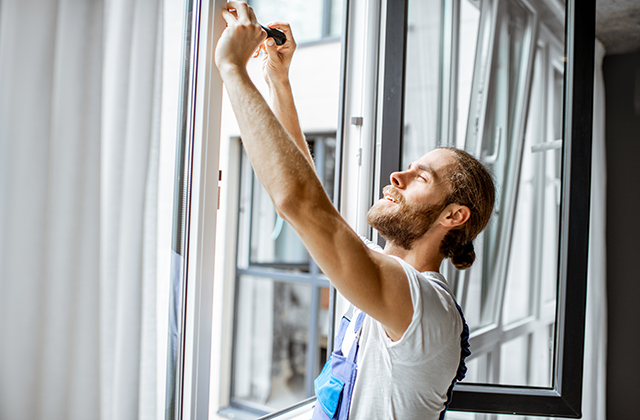Luxury cars are a symbol of sophistication, performance, and attention to detail. One aspect that sets these vehicles apart from others is the flawless finish of their paintwork. The gleaming surface of a luxury car doesn’t just add to its aesthetic appeal—it also plays a critical role in preserving the vehicle’s value. However, maintaining that pristine look can be a daunting task, especially after years of exposure to environmental factors like UV rays, road debris, and contaminants. Restoring luxury car paint is no small feat, and using ceramic coating for this process has its own set of challenges.
In this article, we will delve into the complexities of restoring luxury car paint using ceramic coatings, highlighting what car owners can expect during the process, and addressing common concerns that may arise. We will also touch upon why luxury car paint correction is a crucial step in achieving the best results.
Understanding Ceramic Coating
Before diving into the restoration process, it’s essential to understand what ceramic coating is and why it’s a popular choice for protecting and restoring luxury car paint. Ceramic coating is a liquid polymer applied to the exterior of a vehicle, creating a protective layer that bonds chemically with the paint. This transparent layer provides a durable shield against harmful UV rays, chemical stains, bird droppings, tree sap, and minor scratches. Once applied, the ceramic coating enhances the paint’s gloss, giving the vehicle a shiny, mirror-like finish.
While ceramic coating is an excellent option for paint protection, it is not a magic fix. It cannot repair significant damage to the paint itself, such as deep scratches, oxidation, or swirls. This is where luxury car paint correction comes into play.
What is Luxury Car Paint Correction?
Luxury car paint correction refers to the process of removing imperfections from a vehicle’s paint surface. These imperfections may include swirl marks, scratches, oxidation, or water spots, which can accumulate over time. The goal of paint correction is to restore the paint to a like-new condition, providing a smooth and flawless surface for ceramic coating to adhere to.
The process involves a combination of machine polishing, compounding, and careful buffing to remove the damaged layers of clear coat. Because luxury car paints tend to be softer and more delicate than standard automotive paints, paint correction for high-end vehicles requires precision, expertise, and specialized equipment.
The Challenges of Restoring Luxury Car Paint
When it comes to restoring luxury car paint using ceramic coating, several challenges can arise. Car owners must be prepared for a process that is often more complicated than initially anticipated. Below, we’ll explore some of the most common challenges that may occur.
1. Paint Sensitivity
Luxury cars often feature custom or high-end paint formulations that can be more delicate than the paints used on mass-market vehicles. These paints are designed to deliver maximum gloss and color depth, but they are also more susceptible to damage from environmental elements, improper washing techniques, and even basic wear and tear. As a result, the paint correction process needs to be handled with extreme care to avoid causing further damage.
The sensitivity of luxury car paint can make it difficult for inexperienced detailers to perform paint correction without risking damage. For instance, using the wrong polishing compounds or machine settings could result in “burning” the paint or leaving behind unsightly holograms. For this reason, it’s crucial to rely on professionals who specialize in luxury car paint correction.
2. Time-Intensive Process
Luxury car paint correction is a labor-intensive process that requires meticulous attention to detail. Depending on the condition of the paint, this stage alone can take several hours or even days. After completing the paint correction process, applying the ceramic coating requires a similar level of patience and precision.
Ceramic coatings must be applied in a controlled environment to prevent contaminants like dust or dirt from becoming trapped under the coating. The application itself involves multiple steps, including careful surface preparation, coating application, and curing time. Each step must be executed perfectly to achieve the best results.
3. Cost Considerations
Restoring luxury car paint using ceramic coating is not a low-cost endeavor. The price reflects the high-quality products and expert labor required to complete the process. Professional detailers often use premium ceramic coatings that offer longer-lasting protection and superior gloss, but these products come with a higher price tag. Additionally, luxury car paint correction requires advanced tools, equipment, and significant expertise, all of which contribute to the cost.
While ceramic coating is an investment, it’s worth considering that the protection it offers can save you money in the long run by reducing the need for frequent paint correction and detailing. For those who want to keep their luxury vehicle looking pristine, the benefits far outweigh the costs.
4. Ensuring Proper Surface Preparation
Surface preparation is arguably the most critical step in restoring luxury car paint with ceramic coating. Without thorough paint correction, the ceramic coating will simply seal in any imperfections, resulting in a less-than-ideal finish. This makes the correction stage crucial in achieving a flawless final result.
Luxury car paint correction involves the removal of surface contaminants like tar, iron particles, and embedded dirt through a process called decontamination. Afterward, the paint must be polished to eliminate swirl marks, fine scratches, and oxidation. Skipping or rushing through this step will result in a subpar application of the ceramic coating.
A common challenge in surface preparation is identifying which areas of the paint require more intensive correction. This can be especially tricky with luxury vehicles, as their paint finishes tend to be more complex and show imperfections differently depending on the lighting and angles.
5. Curing Time and Maintenance
Once the ceramic coating is applied, it requires a curing period to bond properly with the paint surface. During this time, the vehicle must be kept out of direct sunlight, moisture, and harsh chemicals to avoid disrupting the curing process. For many luxury car owners, this can be an inconvenience, as the vehicle may need to be kept in a climate-controlled environment for several days.
Moreover, while ceramic coating provides excellent protection, it doesn’t make the car’s surface maintenance-free. Routine washing and proper care are still required to maintain the coating’s longevity and effectiveness. Using improper washing techniques, such as automatic car washes or harsh cleaning products, can degrade the ceramic coating and expose the luxury car paint to potential damage.
Final Thoughts: What to Expect
Luxury car owners looking to restore their vehicle’s paint using ceramic coating should be aware of the challenges and complexities involved in the process. Luxury car paint correction is often necessary before applying the ceramic coating to ensure the best possible finish. However, this process requires time, expertise, and patience, all of which come with a cost.
Despite these challenges, the benefits of ceramic coating are undeniable. It offers long-lasting protection, enhances the paint’s appearance, and preserves the value of the vehicle. For luxury car owners who are serious about maintaining their vehicle’s aesthetic and protecting its paintwork from future damage, ceramic coating—paired with proper paint correction—is a worthwhile investment.
In conclusion, while restoring luxury car paint with ceramic coating may be a challenging and intricate process, it ultimately provides exceptional protection and aesthetics for those willing to invest the necessary time and resources. By working with professionals experienced in luxury car paint correction, you can ensure that your vehicle’s paint looks flawless and stays protected for years to come. Read this article for the challenges in restoring the luxury car.



